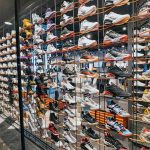Asics Corp. released its 2018 Sustainability Report that showed the company making significant progress in reducing CO2 emissions.
Asics Sustainability Vision encompasses two main focuses—“Smarter for Planet” and “Stronger for People” – each driving sustainability actions in alignment with the UN’s Sustainable Development Goals (SDGs).
“The Asics Sustainability Vision was created to inspire more people to move mind and body to create a stronger world,” said Motoi Oyama, chairman and CEO of Asics Corp. “Our company was founded with the strong belief that sport can shape better, healthier societies. We still live up to this purpose and aim to lead on sustainability both for our planet as well as people.”
Environmental Impact
Asics set targets to reduce CO2 emissions at its facilities by 33 percent, and reduce supply chain CO2 emissions by 55 percent per product by 2030 (*against 2015 emissions).
Actions to achieve these targets include increasing the use of renewable energy at business facilities to 60 percent or above, reducing energy use in Tier 1 supplier factories by 30 percent per product, and transitioning to 100 percent recycled polyester in shoe uppers and sportswear. Asics emissions reduction targets have been approved by the Science Based Targets initiative as scientifically in line with the goals of the Paris Agreement, the first for a global sporting goods company.
In 2018, Asics surpassed its CO2 emissions reduction targets for 2020 two years earlier than initially planned. After initially targeting a 5 percent reduction in CO2 emissions at facilities, the total amount decreased 19.2 percent, while a planned 10 percent reduction in CO2 emissions per pair shoes was actually reduced to 15.9 percent.
Asics continues to introduce technological innovations to improve both product sustainability and functionality through the Asics Institute of Sport Science. In 2018, Asics launched GEL-KAYANO 25 shoe, the first ever shoe to feature next-generation sustainable cellulose nanofiber (CNF), an ultra-fine fiber made from plant biomass that is one-fifth the weight of steel but five times stronger. By using CNF instead of fossil-fuel based material in the new FLYTEFOAM LYTE midsole, Asics will reduce CO2 emissions from material construction by around 27 percent.
In 2018, Asics also prepared to introduce post-consumer recycling programs in the US, Europe and Japan. In Japan, Asics launched the Asics REBORN WEAR PROJECT on January 2019, a project to offer a way to cheer for Japan Team at the Olympic and Paralympic Games Tokyo 2020 by gathering sportswear rich with memories from people across the country and giving it new life as Tokyo 2020 Japan Team official wear.*Asics is a Gold Partner (Sporting Goods) of the Japan Olympic and Paralympic Team.
Asics also became the first Japanese brand to join the Leather Working Group in 2018, a multi-stakeholder group devoted to environmental stewardship in the leather industry.
Community Activation
In 2018, Asics invested over $550,000 in community contributions and donations in kind to worthy causes around the world. As part of this, Asics became a global charity partner for Right To Play, an organization that uses the transformative power of sport to educate and empower children facing adversity around the world.
To further contribute to a healthy and inclusive society, Asics has become the official supplier of the International Paralympic Committee (IPC). Through 2020, Asics will provide kits to officials and some athletes taking part in international Paralympic sports championships, as well as IPC officials at the 2020 Paralympic Games in Tokyo.
To help prevent the exploitation of workers in the manufacturing industry, Asics has joined over 120 other brands as signatories of the Commitment to Responsible Recruitment, an industry-wide approach to responsible recruitment and ethical employment practices for all workers.
For further details on Asics’ CSR and sustainability activities, visit corp.Asics.com/en/csr.















